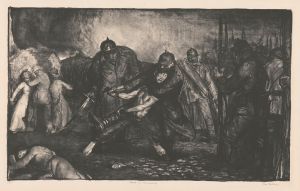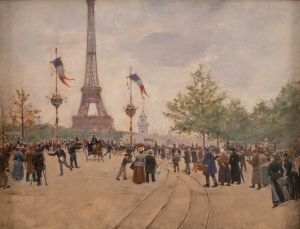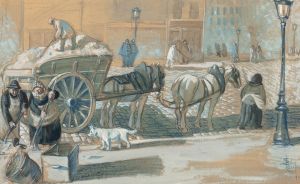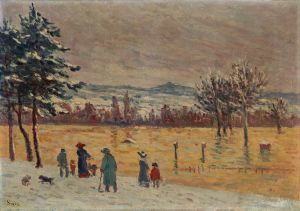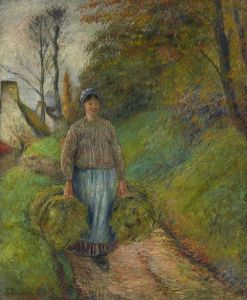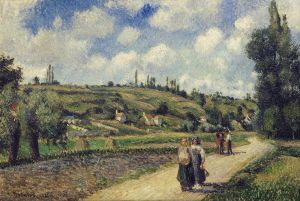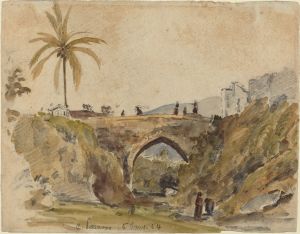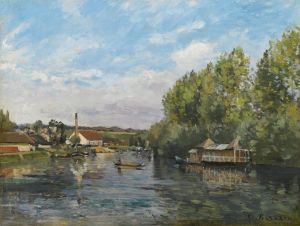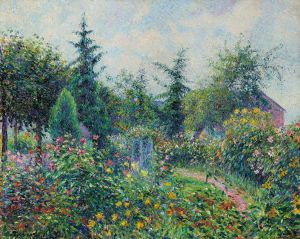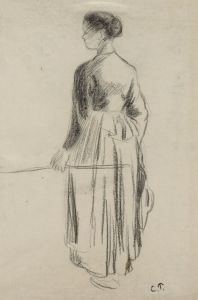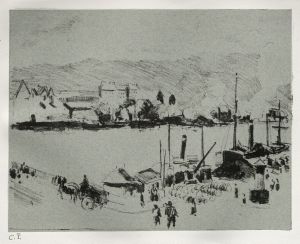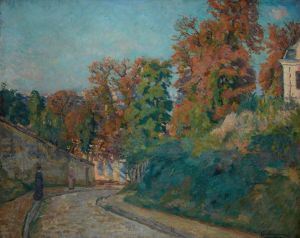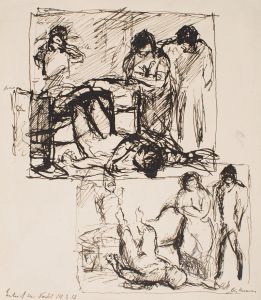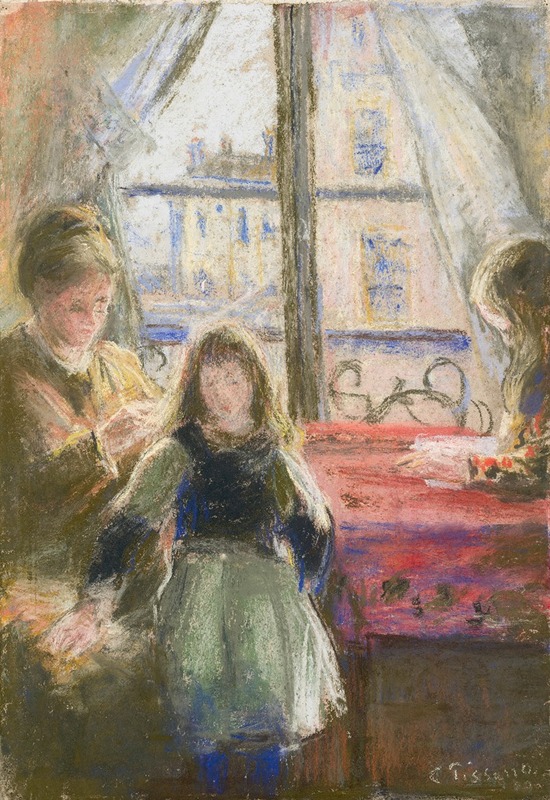
At the Window, rue des Trois Frères
A hand-painted replica of Camille Pissarro’s masterpiece At the Window, rue des Trois Frères, meticulously crafted by professional artists to capture the true essence of the original. Each piece is created with museum-quality canvas and rare mineral pigments, carefully painted by experienced artists with delicate brushstrokes and rich, layered colors to perfectly recreate the texture of the original artwork. Unlike machine-printed reproductions, this hand-painted version brings the painting to life, infused with the artist’s emotions and skill in every stroke. Whether for personal collection or home decoration, it instantly elevates the artistic atmosphere of any space.
Camille Pissarro's "At the Window, rue des Trois Frères" is a notable work by the Danish-French Impressionist painter, who is recognized for his significant contributions to the Impressionist movement. Pissarro, born on July 10, 1830, in the Danish West Indies, later moved to France, where he became a central figure in the Impressionist circle. His works often depict rural and urban scenes, capturing the essence of everyday life with a keen eye for light and atmosphere.
The painting "At the Window, rue des Trois Frères" was created during a period when Pissarro was deeply engaged with the Impressionist style, characterized by loose brushwork, vibrant colors, and an emphasis on capturing the fleeting effects of light. This particular work is believed to have been painted in the late 19th century, a time when Pissarro was living in Paris and was actively involved in the city's vibrant art scene.
The title of the painting refers to a specific location in Paris, the rue des Trois Frères, which is situated in the Montmartre district. Montmartre was a popular area for artists during this period, known for its bohemian atmosphere and scenic views. It was a place where many artists, including Pissarro, found inspiration in the bustling streets and the diverse population.
"At the Window, rue des Trois Frères" depicts a view from a window, a common motif in Pissarro's work, which allowed him to explore the interplay of interior and exterior spaces. The composition likely includes elements typical of Pissarro's urban scenes, such as figures going about their daily activities, the architecture of the buildings, and the play of natural light. Pissarro's ability to convey the atmosphere of a scene through his use of color and brushwork is evident in this painting, as in many of his other works.
Pissarro's approach to painting was deeply influenced by his commitment to capturing the truth of a scene, often working en plein air to observe and record the effects of light and weather firsthand. His dedication to this method is reflected in the authenticity and immediacy of his urban landscapes.
Throughout his career, Pissarro was known for his collaborative spirit and his role as a mentor to younger artists. He was a key figure in organizing the first Impressionist exhibition in 1874 and continued to support and influence the movement throughout his life. His interactions with other artists, such as Claude Monet, Edgar Degas, and Paul Cézanne, were instrumental in the development of Impressionism.
"At the Window, rue des Trois Frères" is a testament to Pissarro's skill in capturing the essence of urban life and his ability to convey the subtleties of light and atmosphere. The painting reflects his interest in the everyday scenes of Parisian life and his mastery of the Impressionist technique.
Camille Pissarro passed away on November 13, 1903, but his legacy endures through his extensive body of work, which continues to be celebrated for its innovation and influence on modern art. His paintings, including "At the Window, rue des Trois Frères," remain an important part of the Impressionist canon, admired for their beauty and their insight into the world of 19th-century France.





